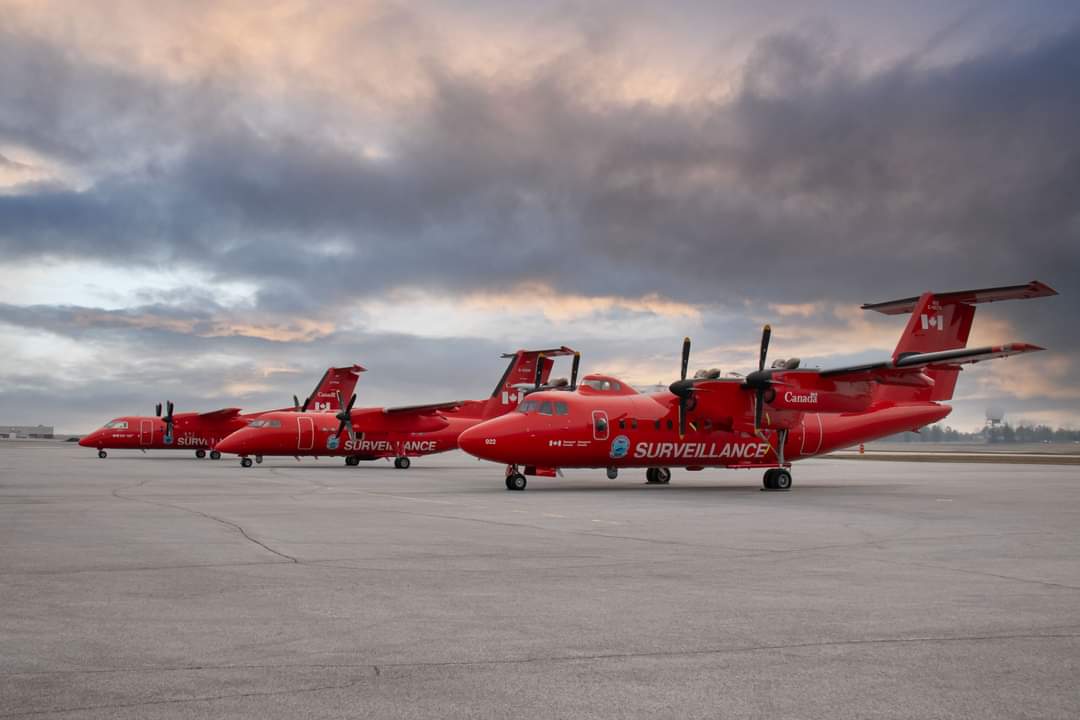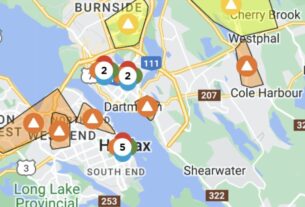**** Transport Canada Release
Since 1991, the National Aerial Surveillance Program crew have been a pillar in protecting Canadian waters

They fly the iconic red planes to detect pollution, protect our marine environment and endangered species, and ensure a safe and efficient transportation industry along our coasts:

National Aerial Surveillance Program
The iconic red planes of Canada’s National Aerial Surveillance Program (NASP) are a pillar in helping Canada stay safe. Since 1991, we’ve grown — adding new aircraft, new technology and new people — all with the goal of preventing pollution in our waters, protecting our marine environment and endangered marine life, and ensuring a safe and efficient transportation industry along our massive and varied coastlines.
Our goals
Preventing pollution
Surveillance done through NASP plays an important part in reducing the frequency of pollution in Canada — such as oil spills — as polluters increasingly know their activities can be detected from above; and in improving the safety of marine shipping by providing evidence for the investigation of shipping incidents. Marine shipping has never been safer in Canada.
Protecting whales
During seasonal whale migration periods, NASP plays a critical role in helping protect endangered whales. Thanks to NASP surveillance, vessels can slow down or avoid areas where marine mammals have been detected in the water; and endangered species, like the North Atlantic right whale and the Southern Resident killer whale, can be safer with fewer collisions with vessels.
Serving Canadians
Beyond whale and pollution detection, the NASP crews can also serve Canadians outside their mandate by supporting national security events, police investigations, search and rescue incidents, humanitarian efforts, and civil emergencies. The NASP’s use of drones (aka Remotely Piloted Aircraft Systems) also supports the Government of Canada’s role in advancing and regulating Canadian industry and innovation.
Our work
NASP operations taking place across the country involve a small but mighty team of planes, drones, satellites, and people — including pilots, surveillance officers, data specialists and aircraft maintenance engineers.
While NASP operations are led by Transport Canada, they represent a larger coordination effort with many partners including federal departments like Fisheries and Oceans Canada, the Canadian Coast Guard, and Environment and Climate Change Canada, as well as provincial governments and private sector partners. Every hour in the air is a careful multitasking effort.
Our fleet
industry.
In 2018, Canada began testing drone technology to help with the surveillance and protection of whales, mapping, and surveying ice and oil spills in Canada’s Arctic. In 2020, Canada bought a new drone , which will be integrated into NASP operations, making marine safety surveillance efforts more robust and varied than ever.
Technical specifications
NASP operations rely on a suite of remote sensing equipment that includes:
- Side Looking Airborne Radars
- Infrared / Ultraviolet Line Scanners
- Electro-Optical Infrared Camera Systems
- Automatic Identification Systems
- Satellite Communications Systems
- Geo-coded Digital Camera Systems
Contact us
Have questions? Contact us at [email protected]



